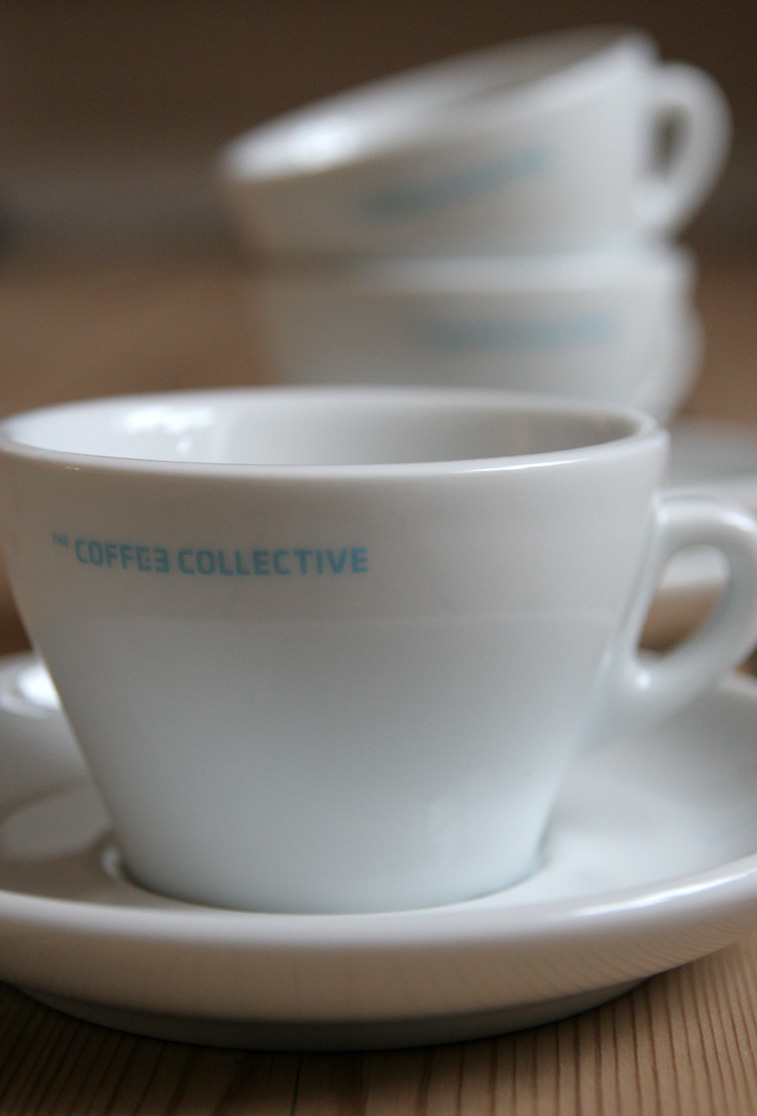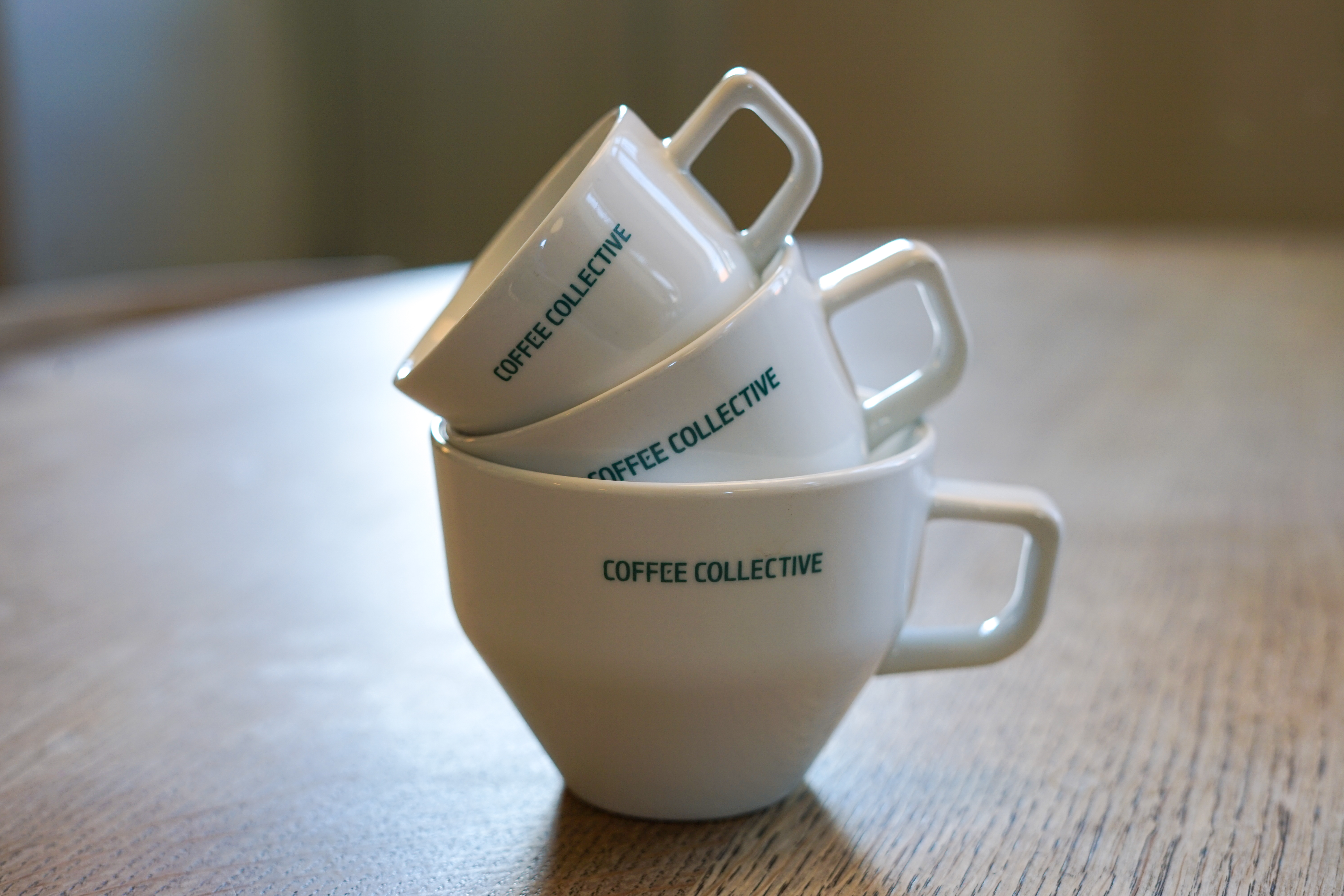For the past year we have been looking to find a set of cups that would suit our needs. From past experience we had some criteria. Stuff we picked up training for the world barista championship and other thoughts we had while working countless hours behind the bar.
We wanted an espresso cup with a round bottom to allow the espresso to mix well while extracting. “Mix” might sound odd to some – after all, the entire espresso passes through one spout on the way from the filter basket to the cup, right. But we’re talking about mixing the first drops of the shot which are very intense and strong with the latter part of the pour. If you have ever done a “Salami pour” (where you change the cup during a pour every five seconds and taste them separately) you’ll know what we mean.
The inside wall of the espresso cup also had to be straight down, because often there are two espresso cups under one double spout and if the walls are angled, sometimes the espresso is running down the side of the wall. In our experience this produce an inferior shot.
We wanted a smaller size of 50-60 ml. compared to the usual 80-100 ml here in Denmark. And we wanted the cup to be narrow, but not tall. This is to make sure the crema is not exposed more than necessary in order to preserve the crema – and the aromas trapped inside – as much as possible. We wanted there to be enough space on top of the espresso to capture those aromas, but not have the cup be in the way of your nose.
In the end we were also searching for a cup that looked good. We wanted white porcelain. Not the off white you often see, but really white like fine dining porcelain. And of course of a good thickness so it would hold the heat well, feel soft on the lips and not break easily.
Some might say that’s a lot of criteria for such a small cup.
It wasn’t much easier for the cappuccino cups. We wanted two sizes; a small and a large.
The small would have to be smaller than any cappuccino cup, we’ve found in Denmark before. 150 ml. This is the smallest size allowed in the WBC, but we’ve found it to be a perfect match with our kind of light roasted 25-30 ml. espresso. The large would have to suit a double espresso, but we really didn’t want a cup twice the size of the small; it just gets too “mega-gulp” for our liking.
Previously we’ve been using Tulip-shaped cups, like the ones I used in the competition. They were great in the way that they made the foam quite thick, due to the narrow surface. But for the same reason they were very hard to present great latte art in.
So, we were looking for cups to combine these two qualities; a conicical shape with a small diameter to support the foam but simultaneously allowing for great latte art.
It has taken a while to find cups that would match the above, but today we’re finally able to launch our own cups.
They are produced by the respected Italian porcelain factory D’Ancap.
The espresso cup is the Palermo. It measures 60 ml. (We measured all cups by filling water to the rim on an accurate digital scale – just to be sure)
The cappuccino cups are from the Torrino line. The small measures 150 ml and the large 220 ml.
Our logo is printed on in a discrete blue color that matches the tint of the beautiful white porcelain.
We launched the first edition of our own cups back in 2008 and have ever since developed a brand new Collective Cup range in great cooperation with ACME. The new and improved version of the cups has now definitively taken over and is available at our webshop and your local Coffee Collective coffee shop.
You might also like
Related stories
Would you like to get our different coffees delivered directly to your doorstep? We've got you covered.
Address
Coffee Collective
Godthåbsvej 34B
2000 Frederiksberg
CVR: 30706595
Contact
mail@coffeecollective.dk
+45 60 15 15 25 (09.00-15.00)
Coffee and cookies
This site uses cookies.
Find out more on how we use cookies.




